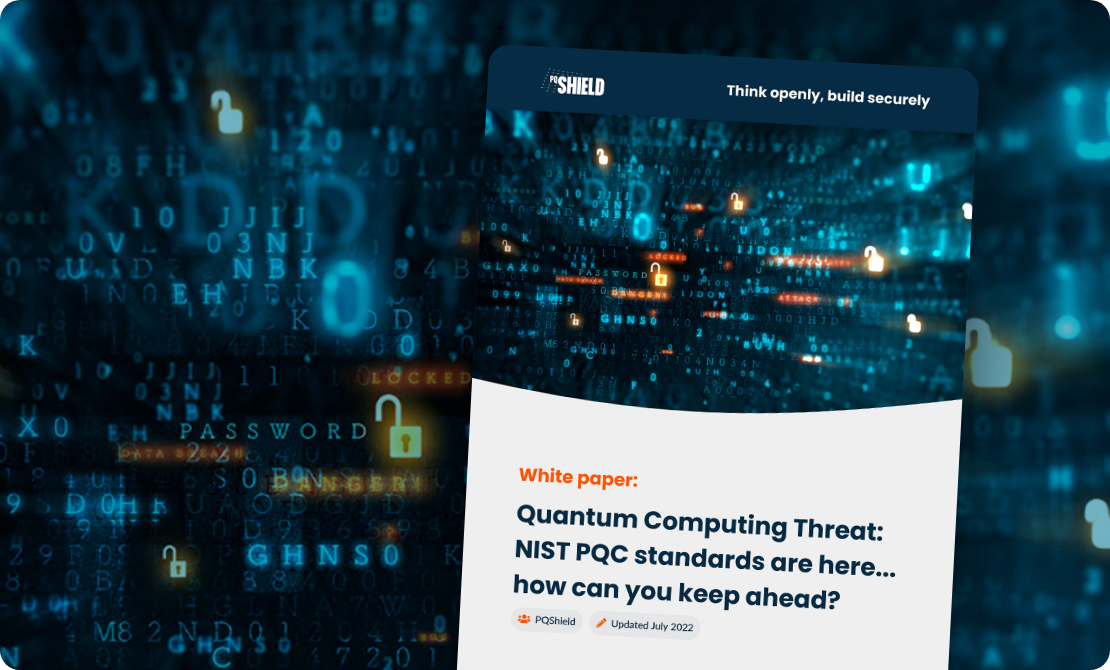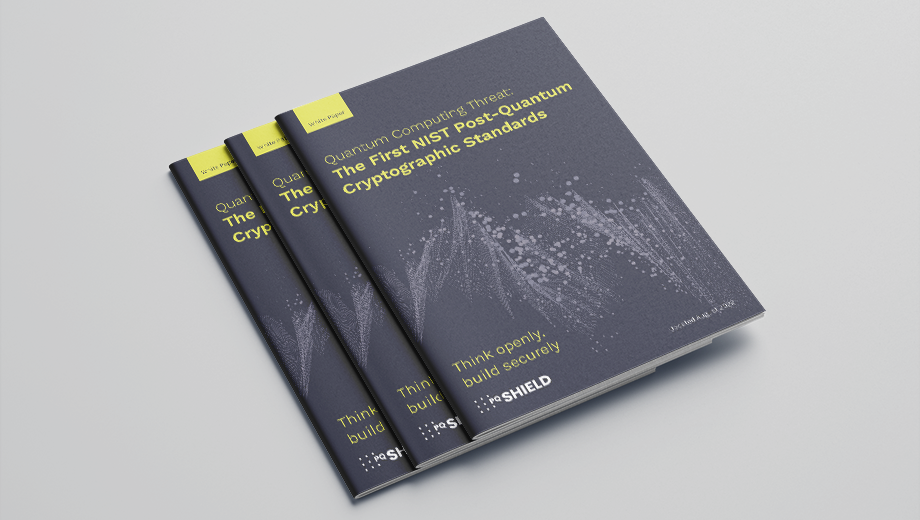White Paper Series
Quantum Computing Threat: NIST PQC standards are here… how can you keep ahead?
The challenges facing information security today are greater and more complex than ever before. Quantum machines, in particular, will represent one of the greatest threats yet posed to information security.
We understand that security experts already have their plates full, and looking further ahead can feel overwhelming. But the reality is that the ‘fix it when it breaks’ approach just isn’t viable when it comes to information security.
At PQShield, our world-class researchers and engineers are leading contributors to the NIST Post-Quantum Cryptography Standardization Process and all NIST standards announced to date have been co-designed by Team PQShield.
We help business leaders and technical experts understand the reality of post-quantum, and provide the technology they need to transition from legacy to quantum-safe systems, ready to face the threats of tomorrow.
Our updated white paper series contains everything you need to know to start protecting your own business, from demystifying the threat to understanding NIST’s cryptographic standards.

Quantum Computing Threat: How to Keep Ahead
It’s no secret that quantum computers pose a significant threat to information security. That can sound daunting, but it needn’t be – there are steps you can take now to protect your organization in the long-term.
Both the NCSC (the UK National Cyber Security Centre) and the NSA (the US National Security Agency) agree that the best mitigation against this threat is post-quantum cryptography. In fact, the NIST (the US National Institute of Standards and Technology) Post-Quantum Cryptography Standardization Project is now finalised, with official standards now announced.
In this white paper, our experts break down everything you need to know (and, crucially, do) to protect your organization from the quantum threat – from ensuring cryptographic agility to establishing a clear roadmap for a smooth and secure transition.

Quantum Computing Threat: An Overview of Post-Quantum Cryptography
Post-quantum cryptography is a relatively new field. While there’s a lot of literature out there for people close to the subject, it can be quite tricky to zoom out and understand what’s going on at a higher level.
That’s why PQShield’s team of world-class experts have put together a white paper, introducing each of the key subfields of post-quantum cryptography – lattice-based, code-based, multivariate, hash-based and isogeny-based – and explaining how they work to protect sensitive information from quantum attacks.
This technical overview will help you understand the different cryptographic solutions that are out there, along with their respective strengths and weaknesses, so you know exactly what you’re dealing with when it comes to choosing what works best for your organization.

Quantum Computing Threat: The First NIST Post-Quantum Cryptographic Standards
The NIST Post-Quantum Cryptography Standardization Project began in 2016, with final, official standards announced in July 2022. Within two to three years, we can expect these to become a requirement for anyone working with the US government, and likely in other critical fields.
Each differs slightly in its design and practicality. But having contributed to every single one of the selected algorithms, PQShield’s team is uniquely positioned to explain how they work.
In this white paper, you can find out more about each of NIST’s chosen algorithms, and compare key aspects such as bandwidth cost, computational cost, and hardness assumptions. It’s a practical view of post-quantum schemes which will be used for years to come.
Putting your best foot forward
Post-quantum cryptography is a complex mathematical field. It gets our team excited, but we realise there’s a lot to digest.
Understanding the basic issues is a vital first step towards a quantum-secure future – but if you want to know more, our team is available to provide more detailed advice, tailored to your specific business needs.
The quantum threat is not a question of ‘if’, but ‘when’. With quantum-safe solutions ready to implement today, and the first NIST standards announced in July 2022, now is the time to get ahead of the curve.
